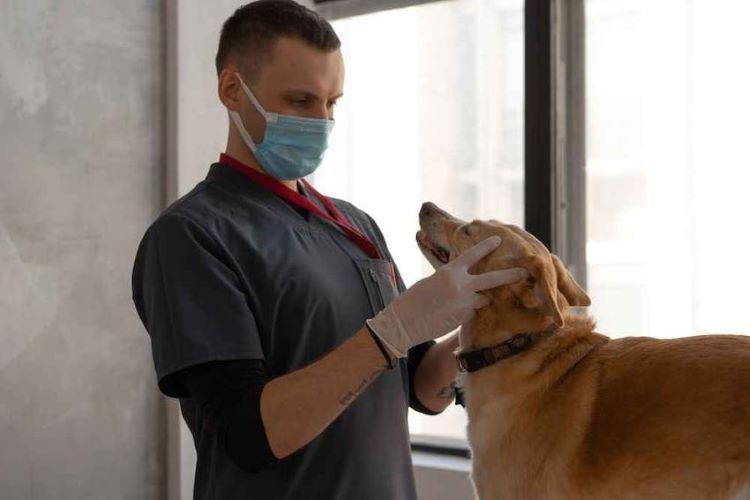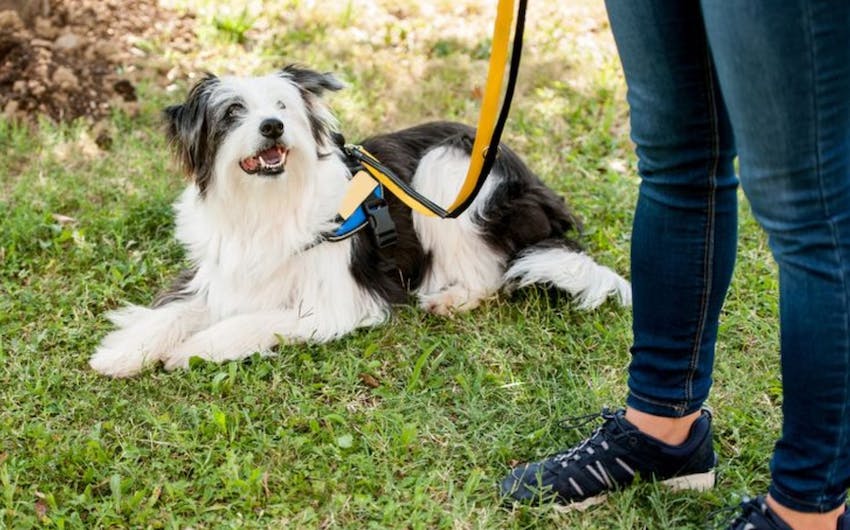Ready to help treat your pet to a healthy life?
What is Chiropractic for Dogs?
By : Trupanion Staff | Updated Sep 16, 2023

Daily exercise and play sessions form a vital part of our pets’ everyday lives. But while living an active lifestyle may be enjoyable, it requires top spinal health and flexibility. Many veterinarians now recommend chiropractic care to treat injuries, restore mobility and relieve pain in animals, particularly in aging pets, working dogs, or those involved in intense obedience and agility training.
The touted benefits of chiropractic for dogs don’t end there; this form of physical manipulation therapy is also becoming popular in treating a surprising number of other health problems: from separation anxiety to incontinence. But how does this treatment work in a veterinary setting, and is it actually worth it for your dog?
How canine chiropractic works
Just like chiropractic care in humans, the veterinary form of chiropractic treatment focuses on the musculoskeletal structure — specifically the spine. A licensed veterinary chiropractor will examine your pet carefully and may even take X-rays to examine their spinal alignment. They will then form a treatment plan tailored to your pet's needs and will make gentle, small adjustments to your pet using their hands (your pet will usually be laying down for this, but positioning can vary depending on the location and type of adjustment).
Because the goal is to go slow and steady without hurting your pet, your dog's treatment plan will often call for multiple sessions. These may be weekly or biweekly to start, then may be spaced out more as progress is made. Some pet owners report seeing immediate improvements in their pet's movement and signs of pain, while others may not notice this until after a few sessions.
Conditions treated by veterinary chiropractic
Chiropractic for dogs can help treat a number of conditions, including:
- Chronic musculoskeletal problems
- Acute tension or stiffness
- Separation anxiety
- Incontinence
- Muscle spasms and nerve problems
- Diagnosed pathologies such as hip dysplasia and CCL rupture
- Skin problems such as lick granulomas
Chiropractic care can also be used to enhance performance, prevent illness and maintain fitness, as well as treat animals suffering from injuries or lameness.

Is veterinary chiropractic right for your dog?
Before embarking on this process, it’s always important to talk to your vet about whether your dog would benefit from canine chiropractic care. They may recommend chiropractic treatment for the following signs:
- Limping, weakness, or lameness in the front legs
- Pain in the hip or hind legs with no symptoms of arthritis
- Trouble standing or lying down
- Looking, yelping, or biting when being lifted and pressure is applied to the chest area
Chiropractic can also assist dogs suffering from a range of issues, including:
- Recovery after a fall, injury, or surgery
- Improving gait and range of motion for senior dogs
- Jaw problems or difficulty chewing
- Getting in and out of the car
- Bowel or bladder issues
- Injuries from dog sports
- Behavioral problems that might be tied to underlying medical conditions
- Easing the birthing process for pregnant dogs
The impact of vertebral subluxations (spinal misalignments)
There are several signs which may indicate vertebral subluxations in pets, from changes in temperament to an abnormal gait or hunched posture. While some vertebral subluxations may not cause pain, they often result in stiffness and tension, and can lead to secondary conditions developing, including problems with muscular co-ordination and mobility. Here’s some of the tell-tale signs to look out for if you feel your pet may be suffering from vertebral subluxations:
- “Puppy sitting”- when a dog sits with its legs out to the side
- Lick granuloma on leg or paws
- Uneven muscle tone
- Acute neck or back pain
- Sensitivity to touch or an aversion to grooming
- Lameness
- Problems with certain movements, such as jumping or climbing stairs
- Carrying the tail to one side
- Aggressive, withdrawn or unsociable behavior
- Dry, dull coat or rough patches of fur
Is chiropractic for dogs dangerous?
Just as with any form of treatment, chiropractic can come with some risks. If not performed correctly, your pet could wind up in greater pain and even more limited movement. The good news is that long-lasting negative side effects are rare, but it is still important to talk with your pet's veterinary team ahead of time about any potential risks.
It's also important to understand the differences between veterinary medicine and holistic / alternative treatments. Holistic and alternative treatments often need more long-term study or produce more consistent, effective results before being deemed thoroughly safe for animal patients.
Minimizing side effects and risks of injury
The primary draw of chiropractic for dogs is the holistic nature of the treatment and its ability to encourage your pet’s body to heal itself. A healthy nervous system helps restore and maintain good general health, and this targeted therapy can support that.
When performed correctly by a trained veterinary chiropractor, the treatment is generally safe and free of harmful side effects. However, only light exercise is recommended after treatments to minimize the risk of injury. Treatment plans are often also supported by a complimentary exercise regime to ensure your pet benefits as much as possible from the therapy.
Never allow dog chiropractic with an untrained practitioner. Though an increasingly offered therapy in many veterinary settings, it is not taught routinely in veterinary medicine. Don't be afraid to ask about a practitioner's credentials and past successes before approving chiropractic for your own pet.

The growth of veterinary chiropractic care
Chiropractic medicine was first practiced in the early 1900s, however ongoing opposition from osteopathic and mainstream medicine meant the therapy wasn’t licensed across all fifty states until as late as 1974. It began to emerge in veterinary medicine in the following decade and spiked in popularity during the late 1980s and early 1990s. In more recent years, veterinary chiropractic has seen a resurgence along with the rise of holistic medicine and alternative therapies for pets.
As a natural, drug-free alternative for pain relief, chiropractic care is favored by many pet owners. Chiropractic for dogs can be combined with most conventional and alternative therapies and most pets, particularly those with chronic pain conditions, respond well to the treatment. The treatment is now a preferred method for pain relief and mobility problems due to it being non-invasive. It can be used as a standalone therapy or in conjunction with other conventional treatments, and is suitable for juvenile, adult and senior pets.
Can dog chiropractic be covered by pet insurance?
In some cases, you can get your dog's chiropractic treatment covered by insurance. Trupanion offers coverage for pet chiropractic, as well as veterinary-recommended acupuncture, behavioral modification, hydrotherapy, homeopathy, naturopathy, and rehabilitative therapy.
Learn more about pet chiropractic coverage today, and if you haven't done so already, consider protecting your dog from future illnesses and injuries with a quality pet insurance plan.
